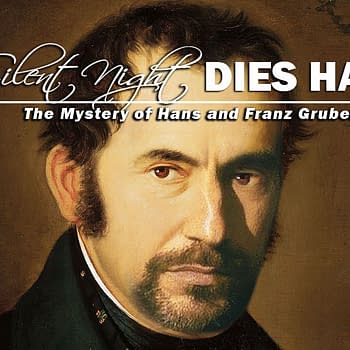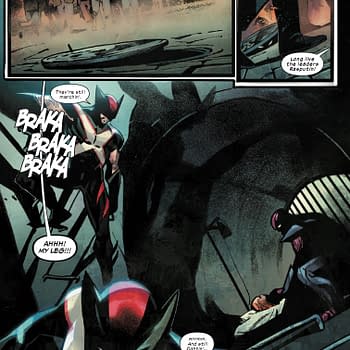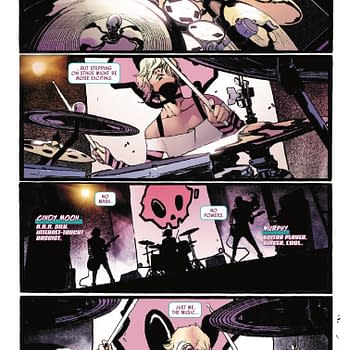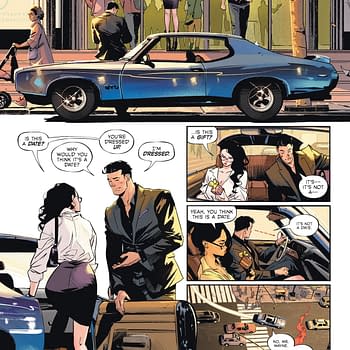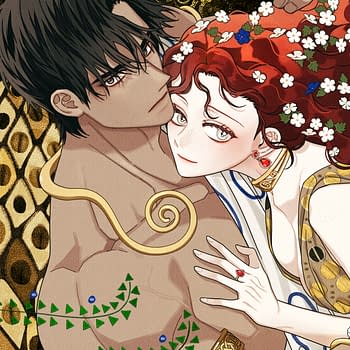Posted in: Comics, Heritage Sponsored, Vintage Paper | Tagged: steve trevor, thomas dewey, wonder woman
How Wonder Woman #7 from 1943 Predicted the Future of Politics
I've been wanting to do a deep dive into the story behind Wonder Woman #7 for quite a while, and the appearance of a Wonder Woman #7 CGC 5.5 copy in the 2020 July 9 – 12 Comics & Comic Art Signature Auction underway at Heritage Auctions right now affords me the perfect opportunity. With a cover banner proclaiming "Wonder Woman for President" and a Winter 1943 cover date, the then-quarterly comic hit the newsstands that November and would remain there as 1944's presidential campaigns got underway in earnest. I've been curious just how much this story was inspired by events of the day, and as it turns out the answer to that question is — quite a lot.

Imagine a United States Presidential campaign contest between a woman and a populist male candidate whose backers come from an emerging wing of one of the major parties. Further imagine that the female candidate's party explicitly supports gun control in the storyline, while figures among the male candidate's party work to circumvent such measures. And finally, imagine a story where the male candidate snatches victory from the jaws of defeat from a surprising eleventh-hour shift in voting trends. Bleeding Cool readers in the modern day have likely heard about such a scenario, and Wonder Woman #7 readers were familiar with it after reading that issue as well. The auction for the Wonder Woman #7 CGC 5.5 copy closes on July 9, 2020.

Wonder Woman's Adventure of the Life Vitamin
The extent to which this story is pulled from the headlines of the day is suggested in a simple but important way at the outset of the story. The title page caption blurb explains:
How would you like to gaze into the magic sphere of Paradise Island and see the future world as it will be 1,000 years from now with you playing a leading part in its history? That was Wonder Woman's experience and it brought care and trouble as well as new thrills and dangerous adventure into her glamourous life!
When Etta Candy discovered the life vitamin that renews youth she little dreamed that this priceless gift to humankind would endanger the life of a beautiful girl president of the United States, far off in the future — but let the magic sphere tell its own story.
Beautiful as Aphrodite, wise as Athena, stronger than Hercules, swifter than Mercury, Wonder Woman links Paradise Island with beloved America, the country for which she gave up her birthright to serve in its time of need.
Out of an ageless past Wonder Woman brings to you a future of thrills and beauty in The Adventure of the Life Vitamin.
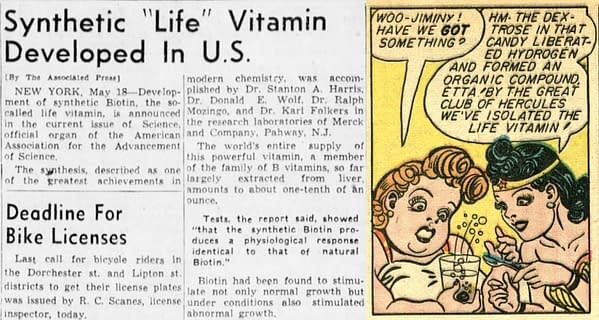
The "Life Vitamin" is real, and it made headlines around the country in early 1943. As explained in this Associated Press story from May 18, 1943, the "Life Vitamin" is Biotin, then created in synthetic form for the first time, according to this report. A member of the family of B vitamins, Biotin is marketed to this day as a supplement that acts as a metabolism booster and helps skin and hair maintain a more youthful appearance — although the scientific consensus on the matter is now much more conservative.
But this so-called "Life Vitamin" acts as a framework for Aphrodite to show Wonder Woman a future where humans enjoy very long lives — and women have become ascendant in politics.
The Cartoon History of 1940s Politics
Many of the political elements of the 1940s and the 1944 election cycle in particular are strongly suggested in the story in Wonder Woman #7. As we saw with the "Life Vitamin" framework, the ripped-from-the-headlines elements are made clear beginning in the first arc of the story.
In the United States of 3000 AD, where humans are capable of living for thousands of years, women have risen to power in national politics. This future story opens with a female President in power, and a political villain with the obvious name of "Grafton Patronage" having recently been defeated and imprisoned. It's likely no coincidence that in 1943, the League of Women Voters had chosen to focus on political patronage that year, just as it was a topic of national discussion.
This plot element leads to the likely introduction of one of the most important political players of the era into the storyline: Presidential candidate Thomas Dewey. A character called the "Commissioner of the United States Police" is called upon for his expertise regarding convicted criminal Grafton Patronage. This character strongly resembles Dewey, who during his tenure as New York City prosecutor, District Attorney of New York County, and briefly United States Attorney for the Southern District of New York, rose to become one of the most famous law enforcers in the country for taking on the likes of Lucky Luciano and Dutch Schultz.
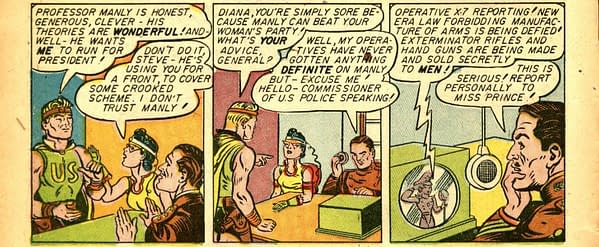
President Franklin Delano Roosevelt's politics are clearly represented by a minor plot point which mentions that "New Era law forbidding manufacture of arms is being of arms is being defied! Exterminator rifles and handguns are being made and sold secretly to men!" This "New Era" gun control is a straightforward reference to FDR's "New Deal for Crime", and a bill known as the National Firearms Act of 1934. With gangsters like Pretty Boy Floyd and Machine Gun Kelly making national headlines, the law sought to more closely regulate the sale of certain types of firearms.
But the story's use of a new political party, the Man's World Party, is perhaps its most interesting political element. The characters and plot points in play make it likely that this party was inspired by a new political party in 1943 who also fielded a candidate for President of the United States the next year. The America First Party of 1943, an isolationist party whose members split from the Republican Party and whose founder, Gerald L.K. Smith, was also associated with white supremacy. Smith was also a member of the blatantly pro-Nazi organization, the Silver Shirts, or Silver Legion of America. The founder of the Man's World Party in the Wonder Woman #7 story is a dead ringer for America First Party (1943) founder Gerald L.K. Smith, while that character's background and methods seem inspired by the bizarre background of Smith's associate, Silver Shirts founder William Dudley Pelley. In the comic book story, the Man's World Party's "Purple Shirts" appears to be an obvious reference to Pelley's Silver Shirts.
I won't spoil the ending of how Wonder Woman, Etta Candy, and Steve Trevor extracted themselves from this tangled political web. I highly recommend that you read this story for yourself. The Wonder Woman #7 CGC 5.5 copy in the 2020 July 9 – 12 Comics & Comic Art Signature Auction which ends on July 9, 2020, at Heritage Auctions is a good opportunity to pick up a copy of this underrated vintage comic book.
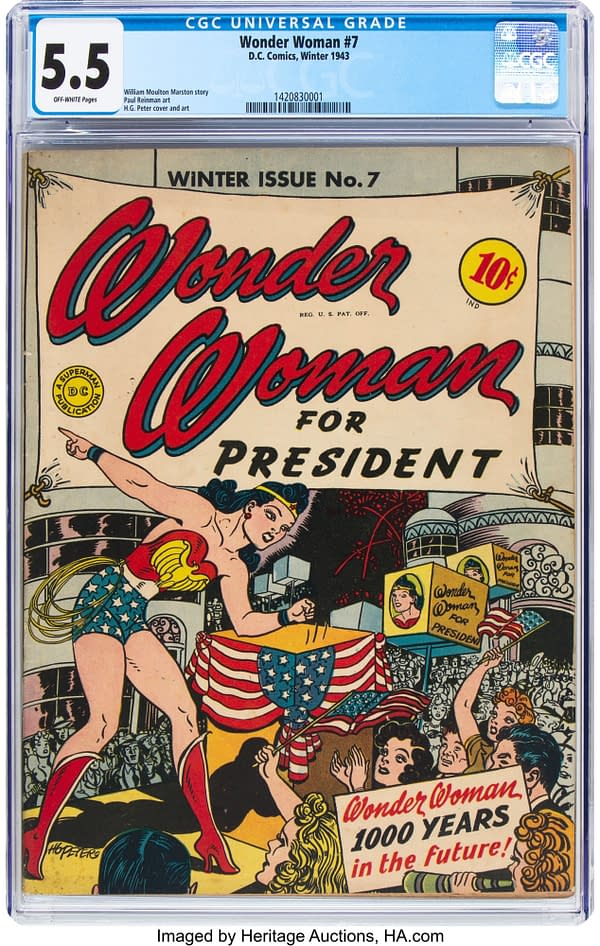
Wonder Woman #7 (DC, 1943) CGC FN- 5.5 Off-white pages. Lately this issue has been fetching multiples of Guide value in every grade! Wonder Woman for President — and with her recent feature film popularity, she may actually have a shot at the office! H. G. Peter cover and art. Overstreet 2019 FN 6.0 value = $2,271. CGC census 6/20: 5 in 5.5, 22 higher.





